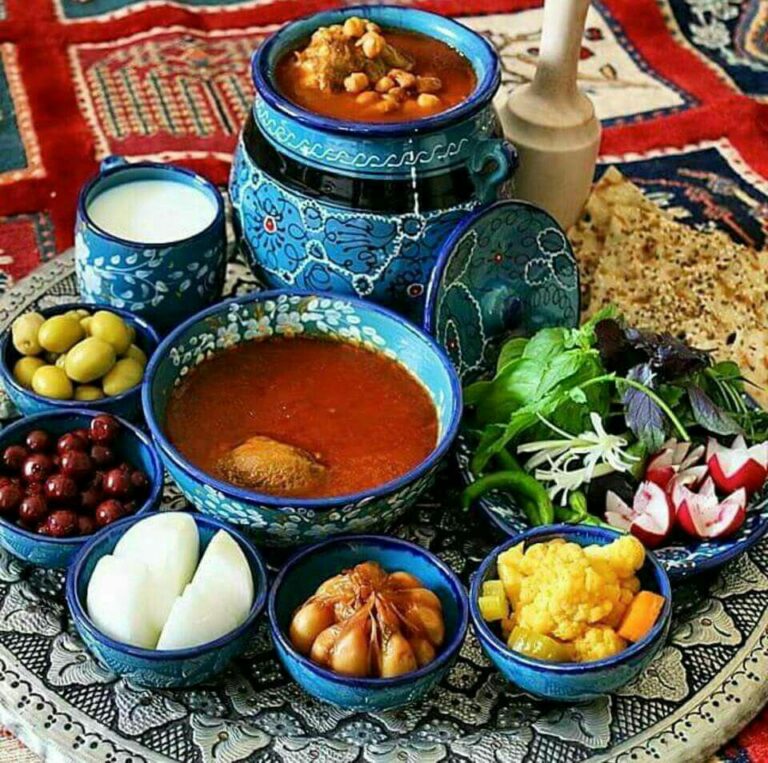Introduction: Iranian Royal Court Cuisine
Iranian Royal Court Cuisine, also known as Persian royal cuisine, is a rich and diverse culinary tradition that dates back to ancient times. It was developed during the reign of the Persian Empire, where food was considered a symbol of power, wealth, and social status. The cuisine was enjoyed exclusively by the royal family and their courtiers, who had access to the finest ingredients, spices, and cooking techniques of the time. Today, Iranian Royal Court Cuisine remains an important part of Iran’s cultural heritage, and its influence can be seen in many of the country’s modern-day dishes.
Characteristics of Iranian Royal Court Cuisine
Iranian Royal Court Cuisine is known for its complex flavors, delicate aromas, and elegant presentation. The cuisine is characterized by its use of fresh herbs, fruits, and vegetables, along with a wide range of meats, including lamb, beef, chicken, and fish. Rice is also a staple in Iranian Royal Court Cuisine, and it is often flavored with saffron, rose water, and other aromatic spices. Other signature dishes include stews, kebabs, and various types of bread, such as lavash and barbari.
Historical Influences on Modern-Day Iranian Cuisine
The influence of Iranian Royal Court Cuisine can be seen in many of the dishes served in modern-day Iranian restaurants. For example, the popular dish of Chelo Kabab, which consists of grilled meat served with saffron rice, is thought to have originated in the royal kitchens of Persia. Similarly, Baghali Polo, a dish of rice cooked with fava beans and dill, has its roots in the traditional rice dishes that were served to the Persian royal family.
Specific Dishes with Royal Court Influences
In addition to Chelo Kabab and Baghali Polo, there are many other dishes that show the influence of Iranian Royal Court Cuisine. For example, Khoresh-e Fesenjan, a stew made with chicken or lamb, pomegranate molasses, and walnuts, is believed to have been a favorite of the Persian royal family. Another dish, Khoresh-e Bamieh, a stew made with okra and lamb or beef, also has its origins in the royal kitchens of Persia.
Techniques and Ingredients Shared Between Eras
Despite the passage of time, many of the cooking techniques and ingredients used in Iranian Royal Court Cuisine remain the same today. For example, the use of saffron, rose water, and other aromatic spices is still a hallmark of Persian cuisine. Similarly, the use of herbs, fruits, and vegetables in cooking is still a common practice. In terms of cooking techniques, the traditional method of slow-cooking stews and braises is still widely used today.
Conclusion: Royal Court Cuisine’s Lasting Impact
The influence of Iranian Royal Court Cuisine can be seen in many of the dishes served in modern-day Iranian restaurants. Although the cuisine was once exclusive to the royal family and their courtiers, it has since become a part of Iran’s cultural heritage and is enjoyed by people from all walks of life. The use of fresh ingredients, aromatic spices, and delicate presentation continues to be a hallmark of Persian cuisine, and the influence of Iranian Royal Court Cuisine will continue to be felt for generations to come.

